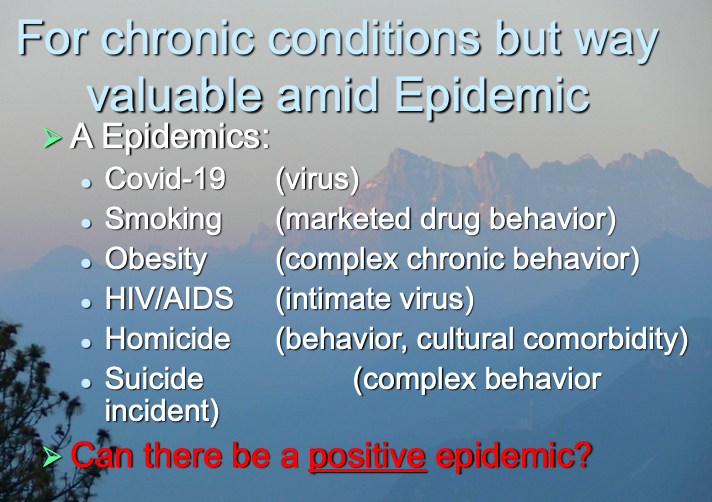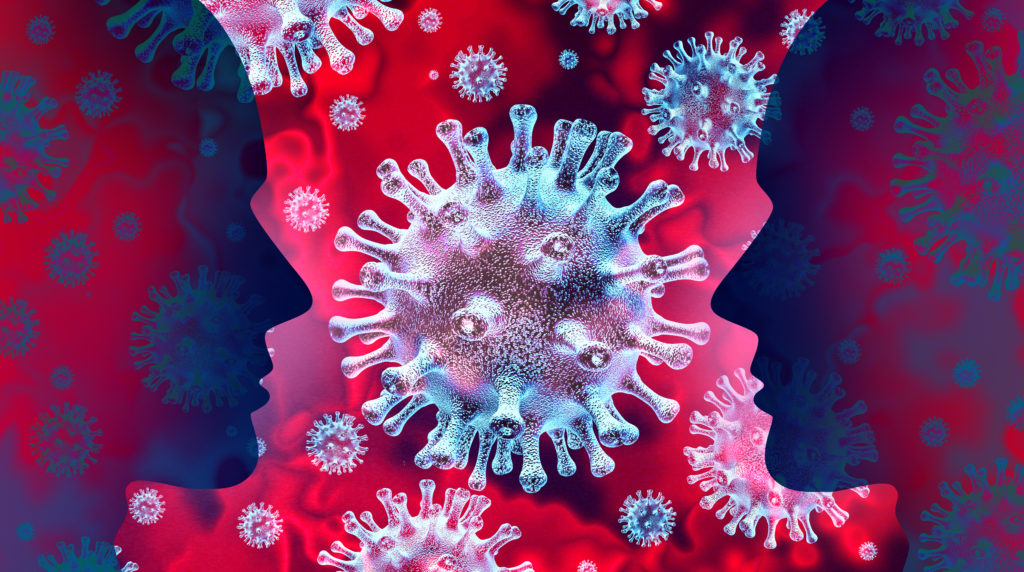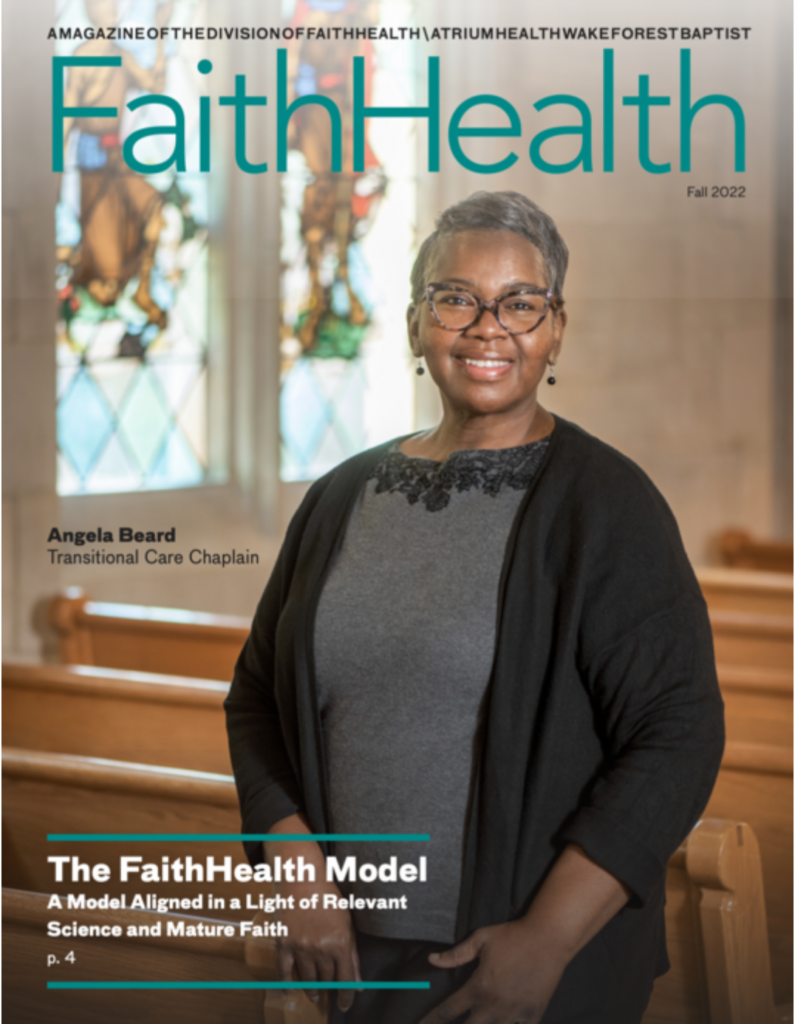By Gary Gunderson
When the viruses come, as they do from time to time, we rediscover the relevance of old ideas, such as public health and communities of compassion.
Public health has experienced a sudden rise in appreciation due to a few trillions of trillions of tiny little organisms much smaller than bacteria. They are not strangers, as we are chock full of viral forms. Perhaps as much as 60 percent of what we think of as our body is actually viral and bacterial colonies that don’t just live in us; they are part of us. We could not digest our food without them. My son-in-law is Dr. Nathan Wolfe, a well-known virologist, so we call these “Nathan’s little friends.”
Some of Nathan’s friends mutate in ways that are destructive and even deadly, often to the very young, sometimes the old. The worst are those forms that have lived in other species and cross over into humans, usually when one of us eats the host animal. Being fond of our children and neighbors, it doesn’t have to kill many of us to get our attention. “Even” a measly 2 percent mortality rate (which means that 98 percent recover) causes our civilization to drop nearly everything else including professional sports, global car shows and even the Hajj in order to resist the latest viral form. Congress noticed, too, as the House voted 415-2 to provide $8 billion dollars to the nerdiest part of the deep state—public health.
Talking accurately

We use the word “epidemic” to include other scary phenomena that do not involve a virus. And we use the word “viral” for other phenomenon that have nothing to do virus (tweets, TikTok, You Tube cat videos). This doesn’t help in a no-kidding viral epidemic.
Accurate words mean life or death for thousands, maybe millions, of individuals somebody loves. Words are how slow-moving humans respond to trillions of constantly changing viruses. With accurate words, our brains and technology can make the choices that lead to life. The viral team has probably enjoyed watching humans erode our most important protection, letting our leaders and connectional tools amplify the dumbest distractions and toxic fears.
Viral strategy exploits the fault lines within our human networks when something is trying to kill us. It is not enough for us to be afraid; we must be able to talk accurately, or our fear will spiral into incoherence. The worst is when we fear other humans, instead of martialing our social capacities and technologies against the virus. HIV/AIDS brilliantly exploited our incoherence and stigma about gender, sex, class and race. Even though that virus is relatively hard to transmit, the silent and unspeakable spaces created pathways for infection. Even though we now have highly effective treatments, wherever those silences remain, the disease still finds its deadly way.
Springing into action
It is helpful to remember the core strategy of viruses and humans, so we play to our strengths and not into the hands of the virus. Viruses adapt constantly and quickly because they reproduce constantly and quickly. Humans are the opposite.; I’ve had only two daughters, as has TC, and they still take a good bit of attention. Now in my sixties, I also have a couple young grandsons. Unimaginable trillions of viruses have not only reproduced, but changed in those lifespans. Humans do change, but slowly, precisely because we are bonded in social intimate ways.

We are the opposite of simple; highly complex with easily distractible curious minds that muddle with reason, emotion, memory and hope. But, when pressed as we now are by COVID-19, we can spring into planning mode guided by amazing powers of pattern recognition and synthetic reasoning. We are good with tools including those required to make more tools. We did okay against the 1918 Flu that killed 70 million of us. Since then we’ve discovered DNA and RNA and, yes, viral forms. And we have invented not only big computers and gene-sequencing machines, but tiny computers in nearly everyone’s hands, with screens and instant capacity to communicate important facts (and cat videos).
Humans have Spirit, which drives a constantly emergent stream of meaning, ritual, language and social forms that help the whole of the human community to do new things. And sometimes it makes it possible for us to remember very important old things. These things of the Spirit are not hard-wired like viral DNA. They spread and adapt through language and ritual. Sometimes, as we saw in HIV/AIDS, religion was part of what made us dishonest and vulnerable. And in the very same epidemic, religious health assets made us smart and adaptive.
Religion is often weaponized by cynical politicians and their funders to avoid the changes that would otherwise be obviously helpful in adapting to serious threats such as the different kinds of epidemics noted above. Religion and politics are so closely interwoven one can mistake them as being the same thing. But religions almost all have ancient writings that have seen every epidemic, moral abomination and ugly religious complicity. Maladaptive political forms have a short life span; religions a very long span adapting slowly but surely to what is possible to hope for.
Americans tend to think of faith as something experienced one person at a time; something you or I “have.” It is private, inside me, self-constructed out of threads and ornamental ideas that appeal to me. We are in a cultural season when congregations are seen as optional, especially the old-fashioned brands such a Methodist, Baptist or Catholic. The congregations that thrive are anti-brands that celebrate you and me self-constructed ideas about ourselves, maybe with a heavy dose of gooey grace to start all over and invent our lives again. We used to call that forgiveness and repentance, but even that is found inconveniently awkward, so we just turn up the music louder and go with the flow.
Our greatest strengths
We have suddenly rediscovered that it is necessary now and then to have a whole lot of public health experts trusted utterly to do the right thing with their gene sequencing machines and tell the truth. It turns out that thousands of such folk are capable of springing into stunningly relevant action. There are even squadrons of public health lawyers who are constantly crafting life-protecting laws and policies. They crafted an honest letter to our governmental leaders about what should be done about the Covid-19 virus without a single syllable of disingenuous fluff. And they organized 400 of their colleagues to sign it, which got the attention of at least NPR and The New York Times, if not those government leaders, yet. I was the only one with a “reverend” in front of my name but it did not disqualify me because I am known fellow-traveler of public health, known especially for my appreciation of the way that mature faith is a friend of relevant science. And the other way around, too.
Nathan counsels that the virus we fear at the moment is “still becoming itself.” It adapted as it crossed from its host species into us. And it is now adapting to our global responses. There are likely to be surprises as we adapt to each other, its trillions against our mere billions. The coming months will bring seasons of alarm and inappropriate comfort, as we think we’ve got it under control and then alarm again. We will live because of our accurate words, clear-sighted recognition of patterns of vulnerability and resistance. And, we live, mostly because of our humane bonds of care and decency. Those are our greatest strengths: The Spirit that gives and protects our common life and lets us find our way together.

